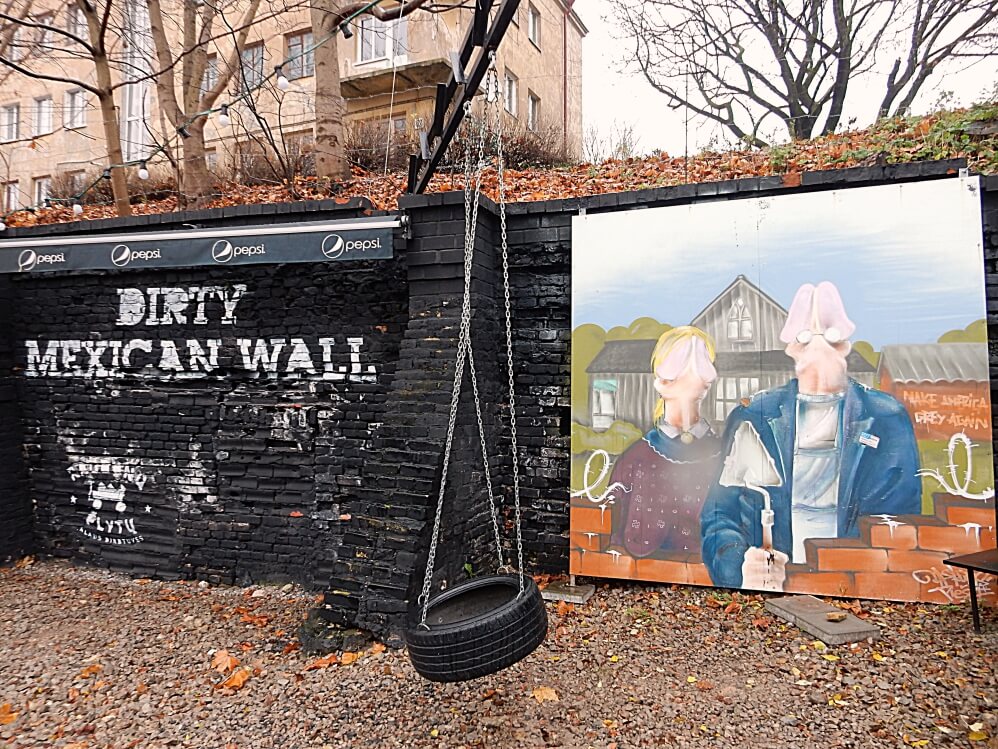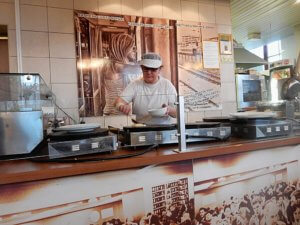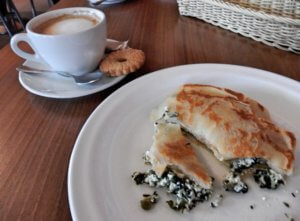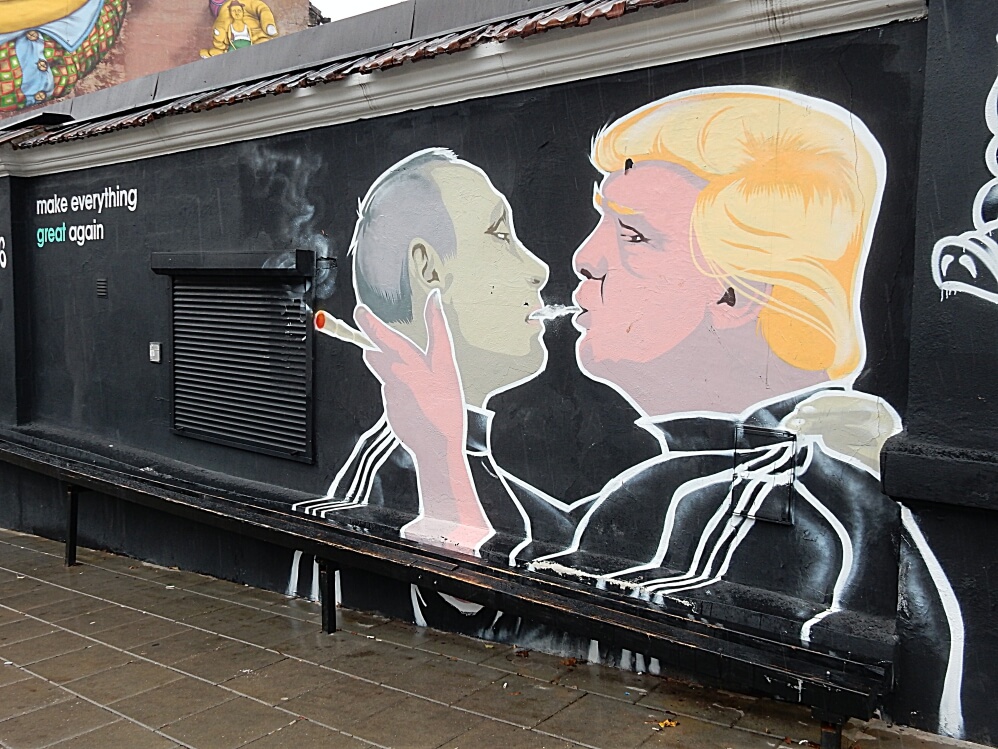VILNIUS, Lithuania – In May 2016, local artist Mindaugas Bonanu painted U.S. presidential candidate Donald Trump locking lips with Russian President Vladimir Putin on the wall of Keule Ruke, a barbecue restaurant near the city’s Central Station. Painted next to the passionate pair was the phrase “Make everything great again,” a riff on Trump’s campaign slogan, “Make America Great Again.”
Bonanu’s mural took inspiration from one on the east side of the Berlin Wall which depicts East German leader Erich Honecker kissing his Soviet counterpart Leonid Brezhnev. That mural, painted by Russian artist Dmitri Vrubel in 1990, is titled “My God, Help Me to Survive This Deadly Love.”
Dominykas Ceckauskas, the barbecue restaurant’s owner, said the mural was “predicting that if Russia and the USA would ever make out, it would happen in the Baltic states … with tongues or with tanks,” NBC News reported.

Photo credit: Linda Gasparello
Three months later, vandals whited out the mural, which had become an international sensation.
“The purpose of the attack was to remind us, the people of the free world, that there are still active advocates of authoritarianism in our society,” Ceckauskas said on the restaurant’s Facebook page.
He promised to reinstall the mural, which he called “a world famous symbol of liberty and defiance.”
Delivering on his promise, there is a new mural which depicts Trump and Putin sharing a joint: fellow authoritarians having a puff.
In the restaurant’s garden, there are two murals on the back wall. The first is inspired by “American Gothic,” American artist Grant Wood’s 1930 painting of a farmer and his daughter standing in front of a house with a gothic window. The farmer is holding a pitchfork. But in the mural, their heads are penises and the farmer, holding a trowel, is building a brick wall topped with barbed wire.
Next to that mural, the wall is painted black. At the top of this mural, these words are painted in stark white letters: “Dirty Mexican Wall.”
Eating Crepes with Gusto
I ate my first crepe in Paris, on a solo trip at age 12. I spent a week there in a youth hostel, under the wing of the Didac Agency, which placed teenaged American girls as au pairs in French families. The agency thought I was too young to be an au pair, even though I was already babysitting in Hingham, Mass., where I grew up. So they placed me with a gregarious family in the southwestern Landes province — the Albert Barrieus — as a companion for their children.

Photo credit: Linda Gasparello
With a limited budget and an unlimited curiosity about French food, a crepe was an easy choice for lunch on the day I checked out the Gare d’Austerlitz, from which I would take a train south to Dax, where I would meet my French family.
At the station’s buffet, I ordered a simple crepe au fromage. The crepe I ate at that buffet (one of Paris’s major train station buffets which the French railway authorities promoted as “gastronomical buffets” in 1960s) is the one by which I have judged all crepes for 50 years.
That delectable experience made me a train station buffet buff. My husband Llewellyn King is one, too. We have eaten very well in train station restaurants in Lyon, Brussels, London and Vilnius.
Vilnius’ Central Station was a short walk across a park from the Panorama Hotel, where we stayed during our recent trip to attend the annual congress of the Association of European Journalists. After taking a look at the old trains in a fenced-in museum park near the platform, we decided to eat at the station’s Gusto blynine. It is basically a Lithuanian IHOP. Lithuanian crepes (lietiniai su varske), American-style pancakes and Lithuanian grated potato pancakes (bulviniai blynai) were listed on seven pages of its 34-page menu.
We ordered spinach-and-curd cheese crepes, made with “traditional” wheat rather than buckwheat (grikiu) batter. They were made near our table in an open kitchen and served folded in a neat square, which kept the batter spongy and the filling oozy.

Photo credit: Linda Gasparello
Although we ate at a few other restaurants in the city, all superb, we returned twice to Gusto blynine. We ate more spinach-and-curd cheese crepes, crusty potato pancakes with fried bacon and hot soup, beetroot with fried ham and tomato with hot paprika.
One evening, we recommended the restaurant to some English and Irish colleagues, who were staying at the Panorama and wanted to dine nearby.
The next day, I asked David Lennon, a former Financial Times correspondent, where they went for dinner. “We found a nice Lithuanian restaurant, which had a lot of little rooms,” he said. “Somehow, I ended up eating a potato sausage. Whoever thought up such a thing?”
And to think that he could have eaten crepes with gusto, as we did at the railway station find.

 Follow
Follow
Ah, if only!